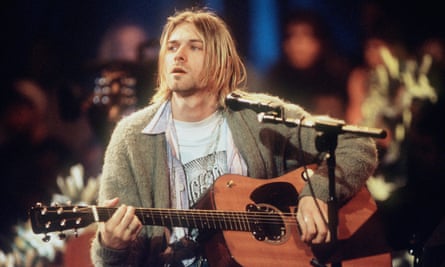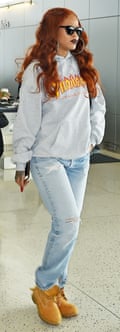Streetwear, like grunge, is often spoken of in terms of attitude rather than design. Both aesthetic movements share a seed of utility anti-fashion about them. But, whereas grunge couture could be capsuled into one single Marc Jacobs look, Streetwear has a mutability about it, from athleisure to health goth.

When Supreme unveiled their collaboration with hoary rock giants Black Sabbath, it was indicative of a trend that has been taking place for a while. “Upscale grunge” sees the confluence of grunge, indie and rock clothing and streetwear, a melding of styles done in a self-conscious, web-savvy way.
It features flannel shirts, band T-shirts and cardigans worn with Stan Smiths or Adidas, by the likes of A$AP Rocky, Travi$ Scott and Kanye West. It’s part tribute to bands like Pearl Jam and Nirvana, part pastiche and also a while new thing.

“I think what (those musicians) see in indie and rock bands is a mentality that they identify with,” says Lynette Nylander, deputy editor of i-D magazine, “(it’s) a counterculture that looks to provoke and that unites people. By donning an indie or rock band T-shirt, it offers a sense of belonging.” Dressing grunge is no longer a badge of authenticity, though: the signifiers of rebellion (Dr Martens boots, plaid shirts) are omnipotent on the high street. “(The clothes) aren’t as authentic as the garb worn in Seattle club basements in the late 80s,” says Nylander, but it still shows “the influence of the scene on a mainstream level”.

It’s also about the fact the influences behind streetwear have more than a context in hip hop. “It’s grown into a lot more than just graphic tees, basketball shoes and rap music,” says Alex Leach, junior editor of Highsnobiety, who called the trend “grungewave”. Brands like Thrasher and Palace have come from a different context. “Streetwear in its current form draws a lot on skate culture and skate style,” says Steve Slocombe, editor-in-chief of Complex UK. On the catwalk, Hood By Air, Hérve Léger and West’s own Yeezy line encompass on these elements. “Skate culture has always sat somewhere between hip hop and guitar music, drawing influence from both.” Supreme may have become known for being the streetwear label worn by hip hop artists, but it actually has a history with alternative acts: think the Morrissey controversy, but also its work with Lou Reed, The Clash and Bad Brains.
“Today’s (consumers), designers and brands are using the internet to broaden their horizons,” says Leach, “and the classic streetwear look just isn’t enough for them anymore.” Instead, streetwear is a fascinatingly, constantly evolving animal.

Comments (…)
Sign in or create your Guardian account to join the discussion